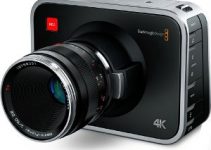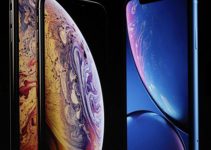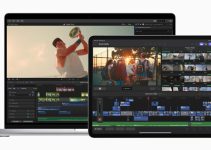We talk a lot about how you don’t need to buy the latest and most expensive cinema camera to get the job done. For beginners and even working pros, you don’t even need that much. Considering how quickly tech evolves, there are plenty of slightly older models that are highly capable and can be had for a steal – like under $500.
FoxTailWhipz thinks that these can be some compelling options and so took a trio of budget cameras for a spin. This includes the more traditional Sony FS100, the first-gen Blackmagic Pocket Cinema Camera, and the Z CAM E1. All interesting releases of their time and potentially able to hold up today.
Each camera has a unique “gimmick” for lack of a better word that separates it from the other options. Most of these aren’t gimmicks but actually great features that videographers will want.
The FS100, for example, has XLR inputs and audio controls; the Blackmagic can shoot in raw; and the Z CAM shoots in 4K while the others are HD only.
Let’s rundown each camera’s main features…
Sony FS100:
- Released in 2011
- Super35 sensor (1.5x crop factor)
- Sony E mount
- Full HD 1080p at up to 60 fps
- Original Cost: $5,000
Z CAM E1:
- Released in 2016
- Micro Four Thirds System (2x crop factor)
- DCI 4K at up to 24 fps; UHD 4K at up to 30 fps
- Full HD 1080p up to 60p; 720p at up to 240p
- Original Cost: $700
Blackmagic Pocket Cinema Camera
- Released in 2013
- Micro Four Thirds Mount
- Super16 sensor (2.88x crop factor)
- Full HD 1080p up to 30p; ProRes and Raw
- Original Cost: $1,000
Now for some real specs.
Video Specs
Starting off with the FS100 we have Full HD video up to 60 fps using a fairly conventional H.264 codec at 24 Mb/s in 8-bit 4:2:0. There are tons of customization options and picture profiles that will allow you to tune the video as you need.
The camera will hit a maximum dynamic range of 11.5 stops and will record to standard SD cards. There is still a proprietary storage option which isn’t a good option today. Last is a base ISO of 500.
With the Z CAM E1 you are getting better resolution with 4K options, including DCI. It still uses H.264 at 60 Mb/s in 8-bit 4:2:0. DCI and UHD 4K can give you a lot more data to work with.
Plus, the slow motion 720p option of 240 fps can be huge for select shots. With a good setup, you could probably get the best image out of this camera. The smaller sensor is limiting though with 10 stops of dynamic range and a base ISO of 100. And, it records to microSD cards.
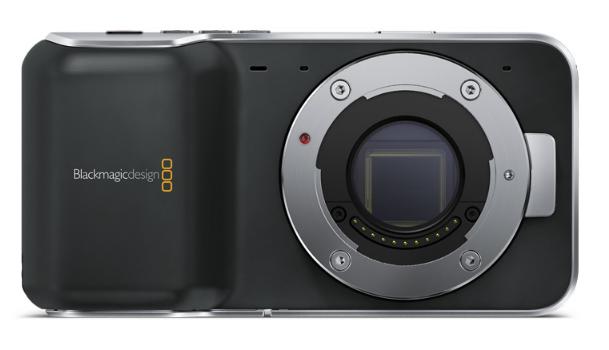
Image Credit: Blackmagic Design
Blackmagic steps up in the codec game. It’ll record Full HD up to 30p in ProRes 422 HQ at 176 Mb/s in 10-bit 4:2:2.
Resolution is nice but that codec and bit depth are definitely going to be helpful in post. There is also raw for maximum flexibility, a base ISO of 800, and the most impressive dynamic range at 13 stops. It’ll even save it all to regular SD cards.
Features & Ergonomics
Again with the FS100 to start. This is the largest option with an odd, blocky design. There are a ton of buttons and dials along with a flip-up screen on top. It also takes the super common NP-F “L series” battery pack. The 3.5” touchscreen is a huge bonus as well. It’s great for monitoring and some touch functions are useful on occasion.
On the side, you’ll find all your shortcuts to get to many of the popular settings. This is rare on non-traditional or smaller cinema cameras. Plus, the two XLR inputs, 3.5mm headphone jack, control port for the side handle, component out, HDMI out, and more make this super useful for using it in a more formal workflow. It’s easily the most ergonomic option here and is the best to use.
The Z CAM E1 is tiny and a lot simpler. A few buttons on the back and some other controls on the top and sides are about it. You will definitely be navigating the menu a ton to get to your settings. The small screen doesn’t make this any easier.
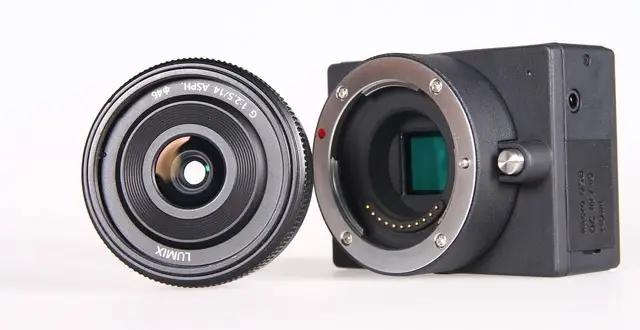
Image Credit: Z-CAM
As for ports it has a 3.5mm mic input, a micro-USB, a 5V DC in, and a mini-HDMI out. Enough there to get the job done. It is a simple device. It is also not designed well for handheld use and would benefit greatly from a cage or rig.
On to the Blackmagic. This splits the difference. It has a 3.5” screen with a wider range of buttons to work with. It’s more like your average mirrorless camera than a true cinema camera so you will need to use the menus.
But, it is a simple video camera so there shouldn’t be much to mess with. Also, there is a 12V input, 3.5mm mic in, 3.5mm headphone out, a micro-HDMI out, and a remote connection. There is a small grip for some handheld use, but it does benefit from a rig.
Video Assist Functions
Having video assists has been surprisingly slow in making its way to everyday mirrorless cameras. Cinema cameras still offer ton more options.
These being more like cinema cameras they do offer a fair amount. Sony has focus peaking, zoom, zebras, and a histogram. Most of this is available via physical shortcuts.
The Z CAM is lacking here with only a zoom in focus assist. Goes along with the camera’s pared down design.
Blackmagic comes in with focus peaking, a histogram, and zebras. It doesn’t have a zoom feature which is unfortunate but it’ll still do well.
ISO Performance
We mentioned the base ISO earlier and that is where the cameras will perform their best, but how about where you can push it. The Sony is clean up to around ISO 1600, which is very nice range. Add a little noise reduction and you can push it a little higher.
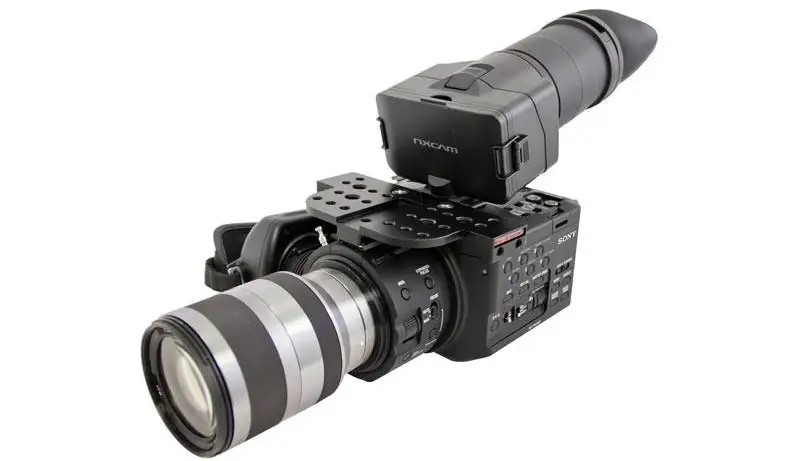
Image Credit: Sony
Z CAM is going to start lower at ISO 100 and is only good up to around ISO 400. This is going to limit it to daytime shoots or with good lighting on a set. It also just doesn’t look as good when noise starts creeping in.
The Pocket Camera is doing alright with a usable range of ISO 200-800 and the ability to push up to 1600 is possible. 800 is the best by far which is the native.
The FS100, even though it is the oldest, somehow pulls out the best performance. The larger sensor does help a ton along with the lower resolution. The Z CAM offers a smaller sensor and more resolution which definitely hurts a lot.
Autofocus
Might as well just skip this category—don’t trust autofocus on any of these cameras. Maybe the FS100 if you absolutely need some AF.
Rolling Shutter
Most cameras have a sensor that reads from top to bottom. Sometimes with certain movements you can actually see the camera isn’t reading quite fast enough and can cause of warping in the image. Handheld and pan shots are the most problematic.
The FS100 has the lowest amount of rolling shutter with the Blackmagic coming in second and the Z CAM coming in last. All of them have it though so you will want to check the samples provided.
Handheld Look
Combined with rolling shutter you will want to be careful how you operate the cameras. This is where handheld form factors matter, especially in just keeping these stable. This is also not a surprise. The FS100’s larger form factor is the best and Blackmagic has a grip to help a little bit. The Z CAM was just a pain and needs some sort of grip.
Audio
If you need to use some internal mics he does do some samples with each. The FS100 is okay, but the XLR inputs are the real lifesaver here since you can use better mics. It doesn’t have the regular 3.5mm input though for more modern options like a RODE Wireless GO. The dials for audio can help a ton.
Z CAM has decent internal mics for a scratch track. There are no audio settings though which means it is always on audio. It doesn’t even have a headphone out for monitoring.
The Blackmagic has terrible internal audio. It is unusable. You need to use an external 3.5mm mic to get something that will help you. There aren’t physical controls but there are some options in the menu for making some of your critical adjustments.
FS100 takes a clear win in audio.
Picture Profiles
This is an interesting section because they all offer some unique looks. With the FS100 he uses a custom profile that makes it good straight out of camera. All the footage here is just straight out of the FS100. There is no log profile if that is what you are looking for though.
Z CAM offers a standard Rec.709 profile as well as Z-Log2. Normally log gammas are the best for flexibility in post. However, the limited codec and compression makes log a terrible option since the footage will just fall apart.
Blackmagic’s advanced codecs win the day here as the ProRes and raw formats are much better for post. The Film profile is a wider dynamic range log profile while the Video profile is meant for Rec.709 work. This definitely is the best.
Final Thoughts
He runs through a ton of test footage which you should definitely check out. At the end of the day he would recommend the FS100 if you are planning on doing some sort of paid work or anything more professional. The design and ability to work handheld is huge.
If you are going for personal projects or a film where you have time then the codecs and footage out of the Blackmagic will put it on top. Look into rigs for it too.
Z CAM is unique, though its size does make a nice pick for crash cams or just super tiny rigs. It might also be found for very cheap which might matter for you.
Which camera did you think was the best of the three?
[source: FoxTailWhipz]
Disclaimer: As an Amazon Associate partner and participant in B&H and Adorama Affiliate programmes, we earn a small comission from each purchase made through the affiliate links listed above at no additional cost to you.
Claim your copy of DAVINCI RESOLVE - SIMPLIFIED COURSE with 50% off! Get Instant Access!



